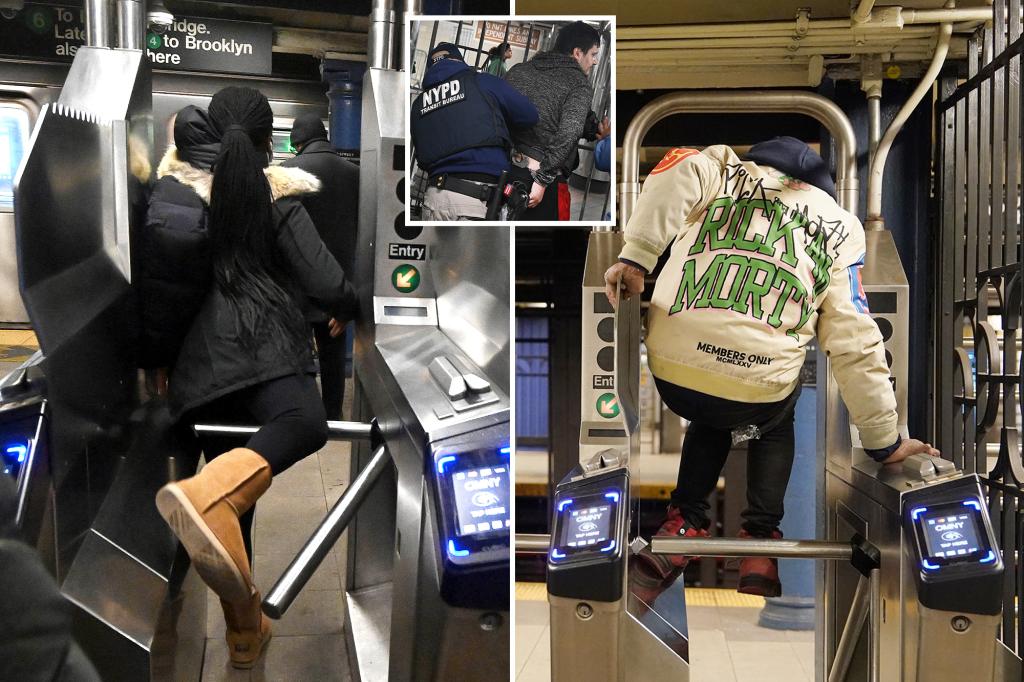The Metropolitan Transportation Authority revealed Monday it notched a tiny drop in fare-beating – but could still lose around $700 million to toll evaders even as it spearheaded a host of schemes to slow it.
Why it matters
- The Metropolitan Transportation Authority (MTA) has made minor progress in reducing fare evasion, indicating efforts to curb this issue are underway.
- Despite the small decline, the MTA still anticipates massive financial losses, highlighting the ongoing challenge of enforcing fare collection.
- This situation raises questions about the sustainability of public transport funding and potential impacts on service quality.
On Monday, the Metropolitan Transportation Authority (MTA) announced a marginal reduction in instances of fare evasion on its transit systems. This news comes as New York City's public transportation authority grapples with the significant financial implications of fare and toll dodging, which could result in an estimated loss of around $700 million annually. The MTA's latest figures indicate that while there has been a slight improvement in fare compliance, the scale of the problem remains daunting.
The MTA's fare evasion statistics reveal a complex picture. Although the authority has implemented various strategies aimed at deterring fare-beating, the results have only yielded a small decline in the number of riders who skip their fares. This marginal drop is a positive sign, yet it underscores the persistent nature of the issue, which continues to plague the agency's financial health.
The $700 million figure represents a staggering amount of potential revenue that the MTA could lose each year due to toll evaders. This loss not only impacts the MTA’s budget but also raises concerns about the agency's ability to maintain and improve services for the millions of riders who use the system daily. Given that public transport relies heavily on fare revenues, ongoing evasion poses a significant threat to the overall viability of transit operations in the region.
In response to the persistent challenge of fare evasion, the MTA has rolled out a series of initiatives designed to enhance enforcement and deter non-compliance. These initiatives include increased surveillance at transit stations, the introduction of advanced fare collection technologies, and greater collaboration with law enforcement agencies. Despite these efforts, enforcement remains a significant challenge, particularly given the sheer volume of daily commuters and the complex nature of urban transit.
The MTA's struggle with fare evasion reflects broader trends seen in public transportation systems across the United States. Many agencies are facing similar challenges as they seek to balance budget constraints with the need to provide reliable service. In an era where public transit systems are essential for reducing traffic congestion and environmental impact, the erosion of fare revenues due to evasion could undermine these goals.
Experts suggest that addressing fare evasion requires a multifaceted approach. This could involve re-evaluating fare structures, improving the overall rider experience, and enhancing communication around the importance of fare compliance. Additionally, public awareness campaigns that highlight the implications of fare evasion on service quality may encourage more riders to pay their fares.
The MTA has acknowledged the need for systemic changes to tackle the issue effectively. As part of its broader strategy, the agency is exploring options such as modifying fare policies and investing in technologies that facilitate easier fare payment. These changes aim not only to reduce fare evasion but also to enhance the overall efficiency of the transit system.
As the MTA continues to navigate these challenges, the agency remains committed to improving fare compliance among riders. The slight decrease in fare evasion is a step in the right direction, but addressing the larger issue of toll evasion will require sustained efforts and innovative solutions. The financial health of the MTA is crucial for the economic stability of New York City, and the authority's success in combating fare evasion will be pivotal for its future operations.
In summary, while the MTA has recorded a small decrease in fare evasion, the potential loss of $700 million from toll dodgers highlights a critical issue that requires urgent attention. The agency's ongoing efforts to improve fare compliance are essential not only for its financial sustainability but also for the overall quality and reliability of public transportation in the city.











